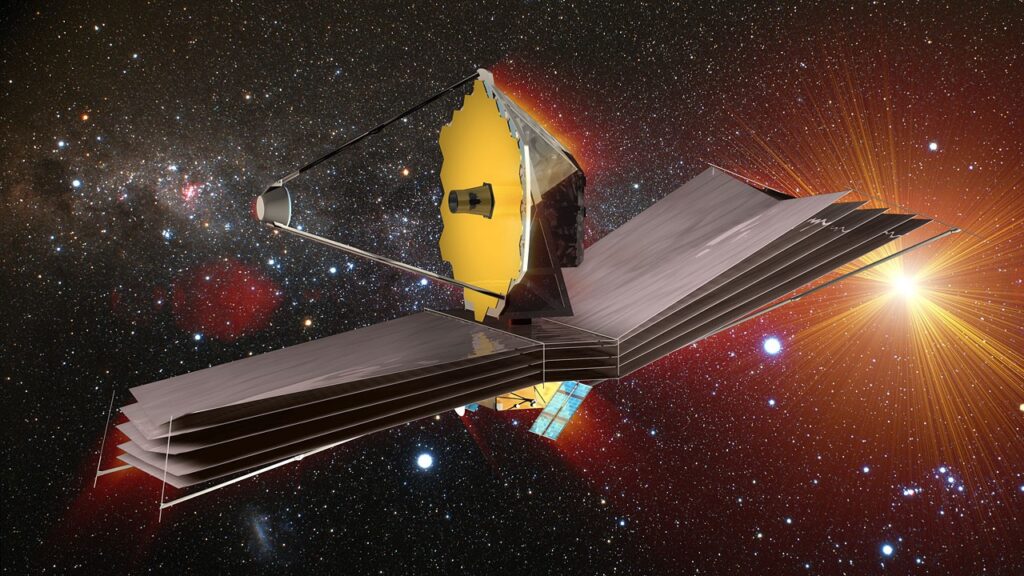This December 25 past, at 7:20 AM Eastern Time, an international team of scientists gave humanity a gift that Santa couldn’t dream of equaling in a thousand Christmases. Carefully packaged atop a European Ariane 5 rocket, the James Webb Space Telescope (JWST) shot into space from the Guiana Space Center in South America.

After 25 years of delays, cost overruns, and redesigns, JWST is on a one-month journey to Lagrange Point 2, a carefully-chosen celestial parking spot one million miles away. There, it will orbit the sun in company with the Earth. Once fully operational, it will glimpse back to the earliest times of our universe, and will survey “nearby” planetary systems for conditions that could support life.
I could not describe JWST or its mission any better than NASA. I encourage you to go here
https://www.nasa.gov/mission_pages/webb/science/index.html
or here https://jwst.nasa.gov/
Who knew about Lagrange Points until now? To learn more, go here:
https://solarsystem.nasa.gov/resources/754/what-is-a-lagrange-point/
JWST is absolutely awesome for three reasons:
JWST is a Scientific and Engineering Marvel
Wrapping up the complex, seven-ton instrument so that it could fit atop a rocket was really hard. But once in space, it had to unwrap itself as it hurtled to its final destination. Much as a butterfly emerges from its chrysalis, JWST unfolded in a precisely choreographed series of maneuvers to deploy its tennis-court-sized multilayer heat shield, advanced instruments, and its 21-foot diameter mirror. The mirror itself is composed of 18 individually adjustable gold-plated hexagons. The launch and deployment went flawlessly despite the hundreds of possible failure points along the way.
JWST Is a Time Machine
After about six months of readying its instruments, it will start collecting data by looking back in time. JWST doesn’t “see” like an ordinary telescope; it sees infrared light, and for a good reason. The universe is expanding, which means the oldest regions (13.5 billion years, give or take) of the universe are moving very, very far away from us. Because of a phenomenon called “red shift, (not-too-geeky explanation here),” https://www.esa.int/Science_Exploration/Space_Science/What_is_red_shift#:~:text=’Red%20shift’%20is%20a%20key,moves%20relative%20to%20an%20observer
these ancient, staggeringly distant areas are only “seen” in the infrared spectrum. Theologians should be intensely interested in what JWST learns about the birth of our universe; perhaps our various Creation stories will need updates. Is the universe infinite? Maybe we’ll get closer to an answer. JWST will also give us our best chance ever to discover planetary systems that could support life, at least as we know it. The line between science fiction and science might get pretty blurry. ET, here we come.
JWST is an Inspiration: What We Can Do Together
Even before it sends us any data, the James Webb Space Telescope is already one of the greatest achievements in the history of science. It came about through the sustained efforts of major space agencies and hundreds of scientists from 14 countries. It demonstrates with utter clarity what human ingenuity is capable of when we work together. Some find the $20 billion cost of JWST hard to justify given all the problems we have on Earth. But beyond what we learn about the universe, JWST will more than pay for itself if we apply its lesson of scientific collaboration to the care of our ailing planet.
